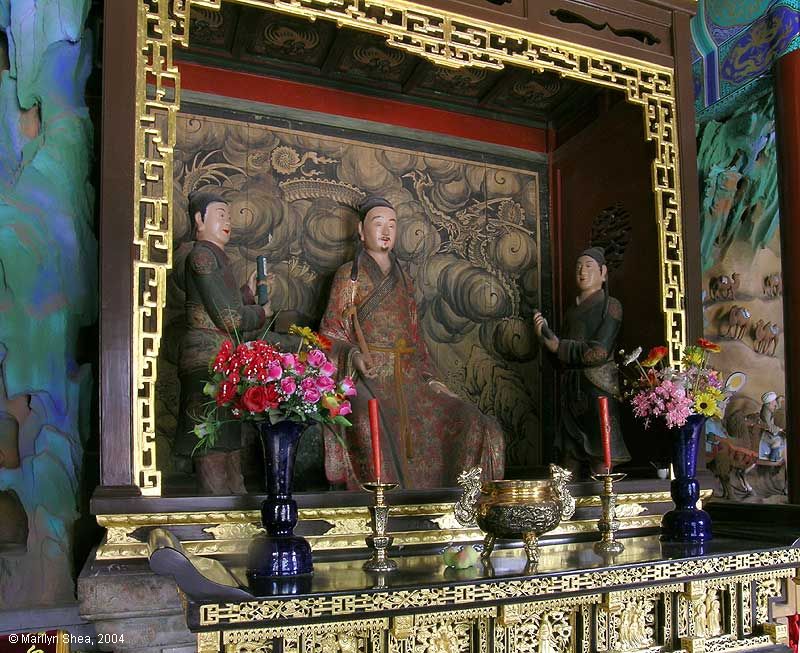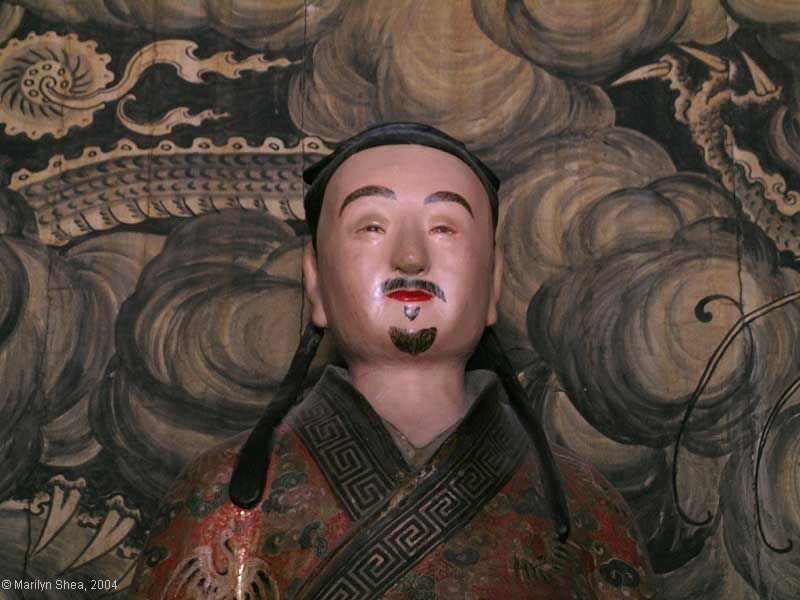On the 25th of the seventh month (August 14) a number of Chinamen, artisans and workmen, who lived there, came in procession to see the master. They were all ravished; met him with exclamations of joy, bowed before him, and accompanied him with variegated umbrellas and fragrant flowers. There were also two concubines of the Kin emperor, Chang tsung, and the mother of a Chinese princess, who met the master with exclamations and tears. The latter said: "For a long time I have heard of your reputation and your virtues, and was always grieved at not having seen you; but now, unexpectedly, I have met you in this country."
The next day Chen-hai arrived from the northern side of the A-bu-han mountain. Ch ang ch'un said to him that he was much surprised at seeing the people ruled by Chen-hai carrying on agriculture, for in the desert this is a rarity. He also asked Chen-hai's opinion about the question of remaining there and waiting the return of the emperor. Chen-hai declared that he lately had received orders from Chinghiz to expedite the master when he arrived in this country, as soon as possible, and that he would be responsible for the master's staying there for any length of time. He manifested his intention to go with the master, so that the latter could not object, and decided to proceed on his journey again. Chen-hai observed further, that in the regions they would have to pass through now there were precipitous mountains and large marshes which could not be traversed by carts. He proposed to travel on horseback, and to restrict the number of the suite and the carts. The master agreed, and left nine of his disciples behind. A monastery was built for them, in the construction of which everybody assisted--the rich with money and the workmen with their labour; so that in less than a month the edifice was finished. It was named Si hia kuan (Si hia was the name of Ch'ang ch'un's native place).
On the 8th of the eighth month (August 26), 1221, the master started again, taking with him ten disciples. There were only two carts with the caravan, and more than twenty Mongols from the station (encampment) accompanied him. Liu kung and Chen-hai had also a hundred riders with them. The way led to the west, in the vicinity of high mountains. One of the servants of Chen-hai reported that these mountains had a bad fame for their goblins, and that once a goblin pulled him by the hair. Chen-hai narrated further, that once it occurred also to the Khan of the Naiman, who passed through this country, to be charmed by a goblin, and that he was obliged to offer a sacrifice to him. The master did not make any remark on these tales.
After having travelled south-westward about three days, we turned to the south-east, passed a great mountain, proceeded through a vast defile, and on the 15th of the eighth month (September 2) we were at the north-eastern side of the Kin shan mountains (the Altai). We stopped here for some time, and then went south. These mountains are very high and vast, with deep defiles and long slopes. There is no road for carts. The road over these mountains was planned and constructed by the third prince, at the time the army went to the west. The hundred riders (who formed the escort) were ordered, at difficult ascents, to pull our carts by ropes, and to place drags upon the wheels when descending. In the space of about three stations (three days' journey) we crossed successively three ridges of mountains, and arrived then at the southern side of the mountain (they had now crossed the Kin shan), where we stopped near a river, at a place abounding in water and grass.
Here tents were pitched, and we were waiting several days for bullocks and horses. The master (profiting from this rest) made three poems (in which he celebrates the scenery of the Kin shan).
Continued ===>>>
pp. 60-62, E. Bretschneider's Mediæval Researches from Eastern Asiatic Sources. (New York: Barnes & Noble, 1888).

